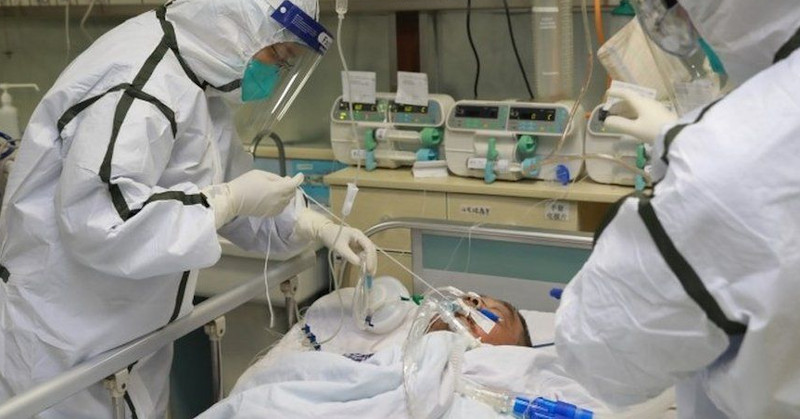
COVID-19 patients: does inhaled nitric oxide during mechanical ventilation give benefits?
Poor oxygenation is the main disease that affects patients with ARDS due to COVID-19. Italian researchers are going to show their experience of inhaled nitric oxide during COVID-19 mechanical ventilation.
Poor oxygenation with a various extent of pulmonary alterations affects almost all patients with ARDS due to COVID-19. Ventilation strategies for COVID-19 patients have been suggested basing on the pathophysiological evidence to date, however, there are no data regarding the use of inhaled nitric oxide (iNO). The University of Pavia and the Fondazione Policlinico San Matteo Hospital IRCCS cooperated in this study to show the potentiality of nitric oxide inhalation in COVID-19 patients with ARDS undergoing mechanical ventilation with refractory hypoxaemia and/or right ventricular (RV) dysfunction.
Inhaled nitric oxide in COVID-19 mechanical ventilation: the discovery
Refractory hypoxaemia was defined as PaO2/FiO2 < 100 despite high PEEP (≥ 10 cmH2O) and prone position. RV dysfunction was defined as acute cor pulmonale at echocardiography with hemodynamic impairment requiring the infusion of inotropic drugs.
The NO/nitrogen mixture was introduced into the inspiratory limb of the ventilator tubing. Respiratory and haemodynamic parameters were collected immediately before inhaled nitric oxide (t0) and after 15–30 min (t1). Responders were defined by an increase of PaO2/FiO2 > 20% compared to t0.
Inhaled nitric oxide was used in sixteen out of 72 (22.2%) consecutive mechanically ventilated patients (66.0 [59.6–69.7] years old; 93% male). All patients required iNO for refractory hypoxaemia of whom 4 (25%) had also superimposed RV dysfunction, in 1 case associated with pulmonary embolism. The iNO dosage was 25 [20–30] parts per million (ppm).
Respiratory parameters at t0 and t1 are shown in Table 1. Overall, inhaled nitric oxide did not improve oxygenation in our population. Only 4 (25%) patients were responders, of whom 3 have superimposed RV dysfunction, showing a median increase of PaO2/FiO2 of 26.9% [24.1–45.5]. A trend towards a larger improvement of oxygenation was observed in patients with RV dysfunction as compared with those without (PaO2/FiO2 increase 24.1% [9.2–43.5] vs. 3.3% [− 10.8–11.5], p = 0.069). Additionally, in responders, PaO2/FiO2 was 125.9 [82.2–259.2] at t1 and did not change (p = 0.875) 24 h later (146.4 [102.2–225.1]).
Results in the text are shown as median [IQR] or number (%). Wilcoxon test for paired samples and Mann-Whitney test, as appropriate (MedCalc version 19.2 MedCalc Software), were performed considering p < 0.05 as significant.
What is inhaled nitric oxide and what is its function in COVID-19 patients under mechanical ventilation?
Inhaled nitric oxide is a free radical gas that diffuses across the alveolar-capillary membrane into the subjacent smooth muscle of pulmonary vessels enhancing endothelium-dependent vasorelaxation and improving oxygenation by increasing blood flow to ventilated lung units. In previous studies, nitric oxide was effective in improving PaO2/FiO2 and oxygenation index, although it failed in reversing acute lung injury, reducing mechanical ventilation days and mortality.
Although the reason why patients with refractory hypoxaemia without RV dysfunction were not responder is yet to be determined, some speculation can be done. Severe endothelial injury with cytoplasmic vacuolization and cell detachment in pulmonary middle-small arteries can make the pulmonary vessels less reactive to inhaled nitric oxide stimulation. This could also explain the loss of hypoxic vasoconstriction and lung perfusion regulation.
However, whether vascular derangements in COVID-19 are due to endothelial cell involvement by the virus, part of the ARDS pathophysiology or the intertwining of both is still undetermined. Moreover, prone position and inhaled nitric oxide were used in refractory hypoxaemia as an escalating treatment strategy. Therefore, a positive response to the prone position may have precluded the enrolment in our study of patients that could positively respond to nitric oxide.
However, inhaled nitric oxide did not improve oxygenation in COVID-19 patients with refractory hypoxaemia when administered as a rescue treatment after prone position.
READ ALSO
SOURCE

